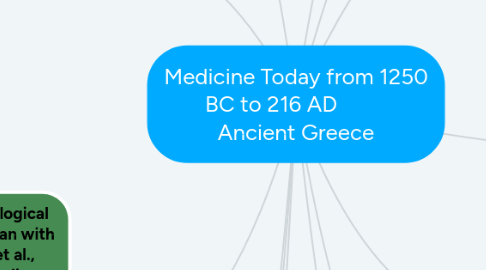
1. Herbal medicine during the Islamic civilization produced more than 1400 medicinal plants and Muslims were pioneers in developing modern pharmacy and chemistry practice (Farag, M., Mohammed, M. S., Foud, I., Ahmed, W. J., Mohamed, M. S., 2015).
2. Ancient Egyptains used garlic (Allium sativum) as a treatment for cardiac and circulatory disorders (Farag, M., Mohammed, M. S., Foud, I., Ahmed, W. J., Mohamed, M. S., 2015).
3. Ayurveda is a medical system primarily practiced in India for over 5000 years, and includes diet and herbal remedies, while emphasizing body, mind and spirit in disease prevention and treatment (Morgan, 2002).
4. Eye salve in a 1,000-year-old Anglo-Saxon medical textbook known as Bald's Leechbook, onion, garlic, wine and cow's bile crushed together and left in a bronze vessel for nine days and nights, has shown in laboratory testing to kill Methicillin-resistant Staphylococcus aureus (MRSA) faster than any antibiotic. (Pitt, 2015).
5. Gaius Plinius Secundus, or Pliny the Elder, 23-79 AD, writes Natural History, the first encyclopaedia a source of scientific information and theory (Stannard, 2019).
6. Folklore use of pharmacological treatment of disease began with the use of herbs (Schulz et al., 2001). Methods of folk healing throughout the world commonly used herbs as part of their tradition (Schulz, Hansel, & Tyler, 2001).
6.1. Traditional Chinese medicine has been used by Chinese people from ancient times. Although animal and mineral materials have been used, the primary source of remedies is botanical (Li, 2000).
6.1.1. Traditional Chinese medicine is still in common use in China. More than half the population regularly uses traditional remedies, with the highest prevalence of use in rural areas (Li, 2000).
6.1.2. Many herbal remedies found their way from China into the Japanese traditional healing with herbs native to Japan and were classified in the first pharmacopoeia of Japanese traditional medicine in the 9th century (Saito, 2000).
6.1.3. Chinese herbs are divided into four functional categories: Yang-invigorating, Yin-nourishing, Qi-invigorating, and Blood-enriching (Leong, Chen, & Ko, 2018)). Cinnamon (Cinnamomum zeylanicum) was used to treat gastro intestinal upset, Astragalus (Astragalusmembranaceus) relieved stress and Rhubarb (Rheum rhabarbarum) as a cathartic (laxative) (Farag, Mohammed, Foud, Ahmed, & Mohamed, 2015).
